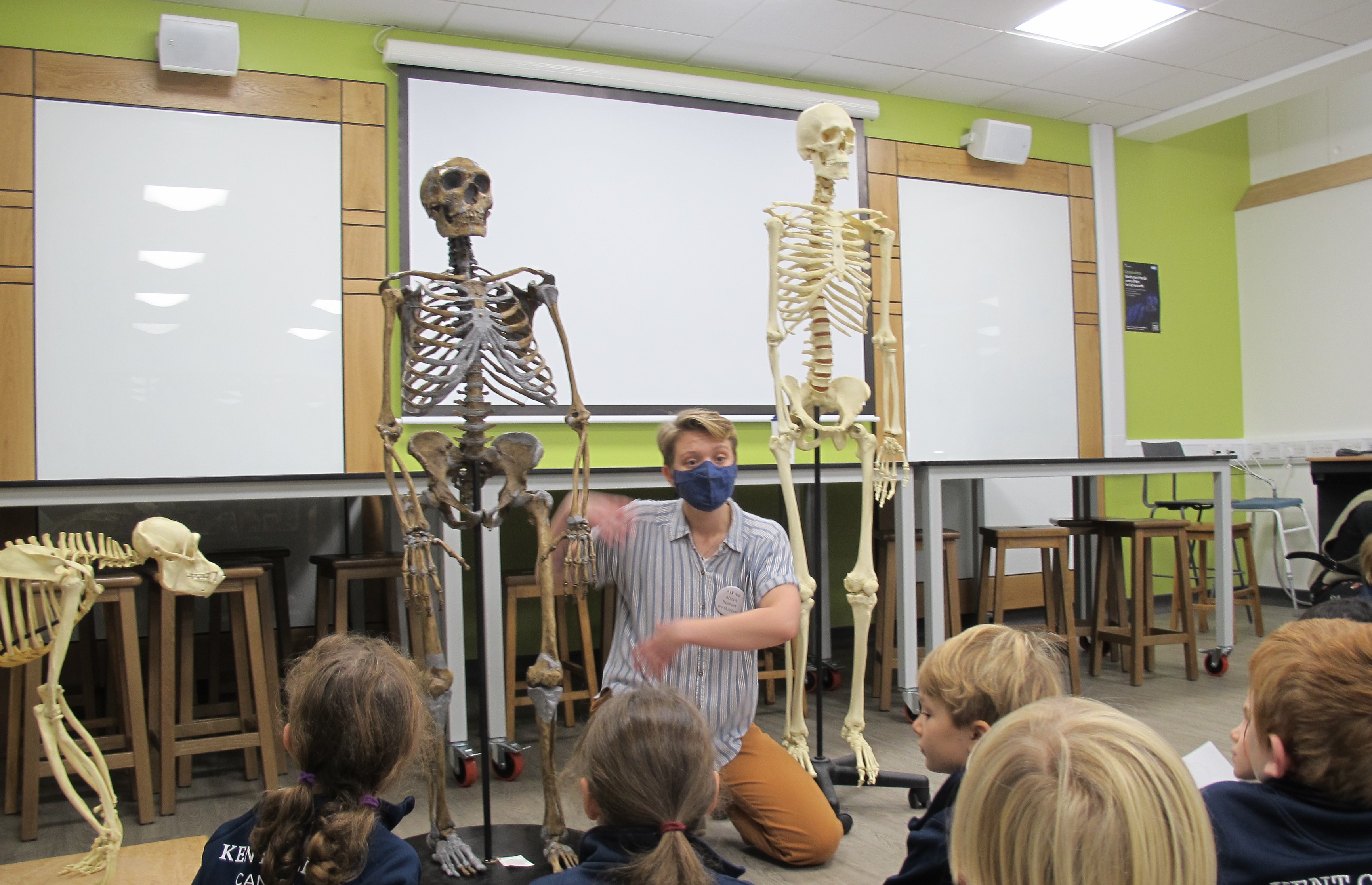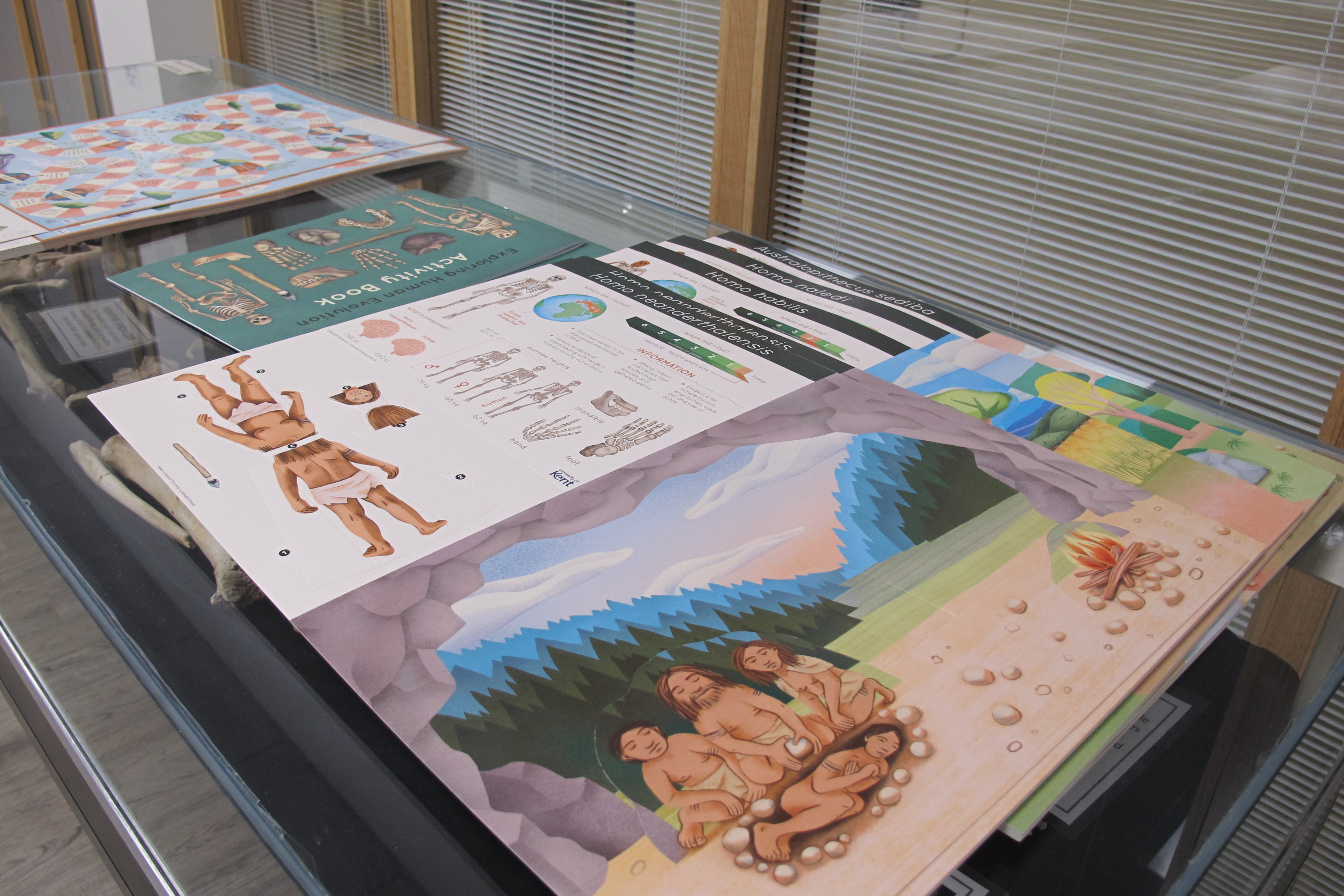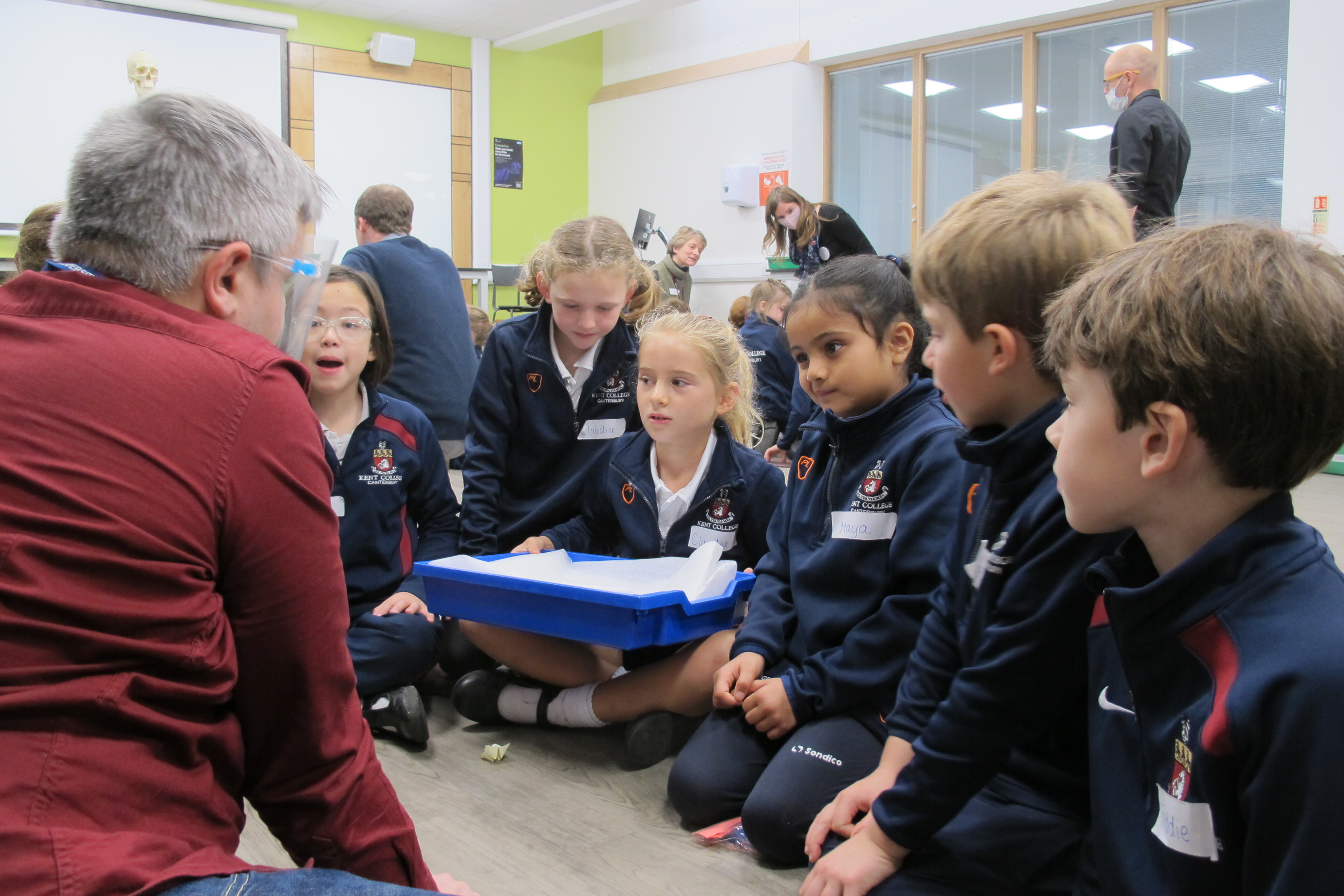Recently Matt Skinner welcomed a school visit of local eight year olds to the School of Anthropology and Conservation’s Darwin lab, acknowledging that the experience of engaging with this demographic is mutually beneficial.
We have been working on our Outreach offering at the School of Anthropology and Conservation. Professor Matt Skinner recently opened the doors of the Darwin labs to a very curious group of eight year olds.

‘It is very important as a scientist, that you can explain your work in a way that is accessible to others. This is made difficult by the immense amount of jargon that surrounds our work and it is a real art to be able to communicate effectively with one’s colleagues, members of the public, friends and family.’ Matt told us ‘I study prehistory and the human evolutionary story (already using some jargon…oops) and my field is full of terrible jargon like Australopithecus (a human ancestor that lived a long time ago in Africa), innominate (the technical term for one of the bones of your hip joint), and Acheulean (another word for an axe made of stone). The advice I often give my graduate students is to explain their work in a way that would be understandable to a child.’
‘From my experience this is an approach even useful when discussing work at a scientific conference because most of the time you are speaking with someone who knows very little about the details of your practical area of expertise. So what better way for my students to practice this than to invite 25 eight year olds to our lab and have them explain the importance of a big brain, how our skeleton differs from that of a chimpanzee, and how making stone tools was a key part of what makes us human?


’Dr Chris Dunmore and PhD candidates Mads Smith and Marine Cazenave joined Matt Skinner, each leading one of the three rotating workshops in the School of Anthropology and Conservation’s Darwin lab. The first activity was a discussion and handling of replica hand axes, fossils and artefacts, using our collection of artefacts and asking these questions Does it remind you of anything? Where do you think it was found? Do you think this is a fossil that is the result of normal forces of nature and geology, or do you think prehistoric humans made it? to stimulate discussion.

‘One of my favourite parts was looking at all the different skeletons in the room.’
The second was comparing two skeletons from the collection, of a human and a chimpanzee, asking How is the chimpanzee adapted to its habitat and environment? How is the human adapted? The third was comparing and ordering skulls, using reconstructed faces from a range of early hominids and a range of skulls selected by the activity leader. We showed the children a selection of head images and asked them to try and order them in a “timeline” from the earliest humans to modern humans. We had worksheets and colouring-in on hand too, linking to different hominids.

‘I enjoyed the dramatic reactions of some of the children when we explained the age of some of the artefacts.’ Chris told us ‘Their interpretations of a replica Venus figurine were also particularly good, with guesses ranging from a frog to a turkey.’

‘I was surprised by the amount of knowledge they had on the topic.’ Marine reflected ‘It was interesting to notice that they thought that the colour of our bones is the same as the colour of our skin, and therefore a white skull cannot be that from an ancestor as they had a black skin. Also, I enjoyed when they realised the diversity in Homo sapiens. For instance, they were convinced that Homo sapiens have long hair on their head but no hair on the body (contrary to our ancestors). Then someone realised that Matt Skinner does not have hair on his head!’
These sessions are adaptable to all ages. To register your interest please contact hssoutreach@kent.ac.uk

